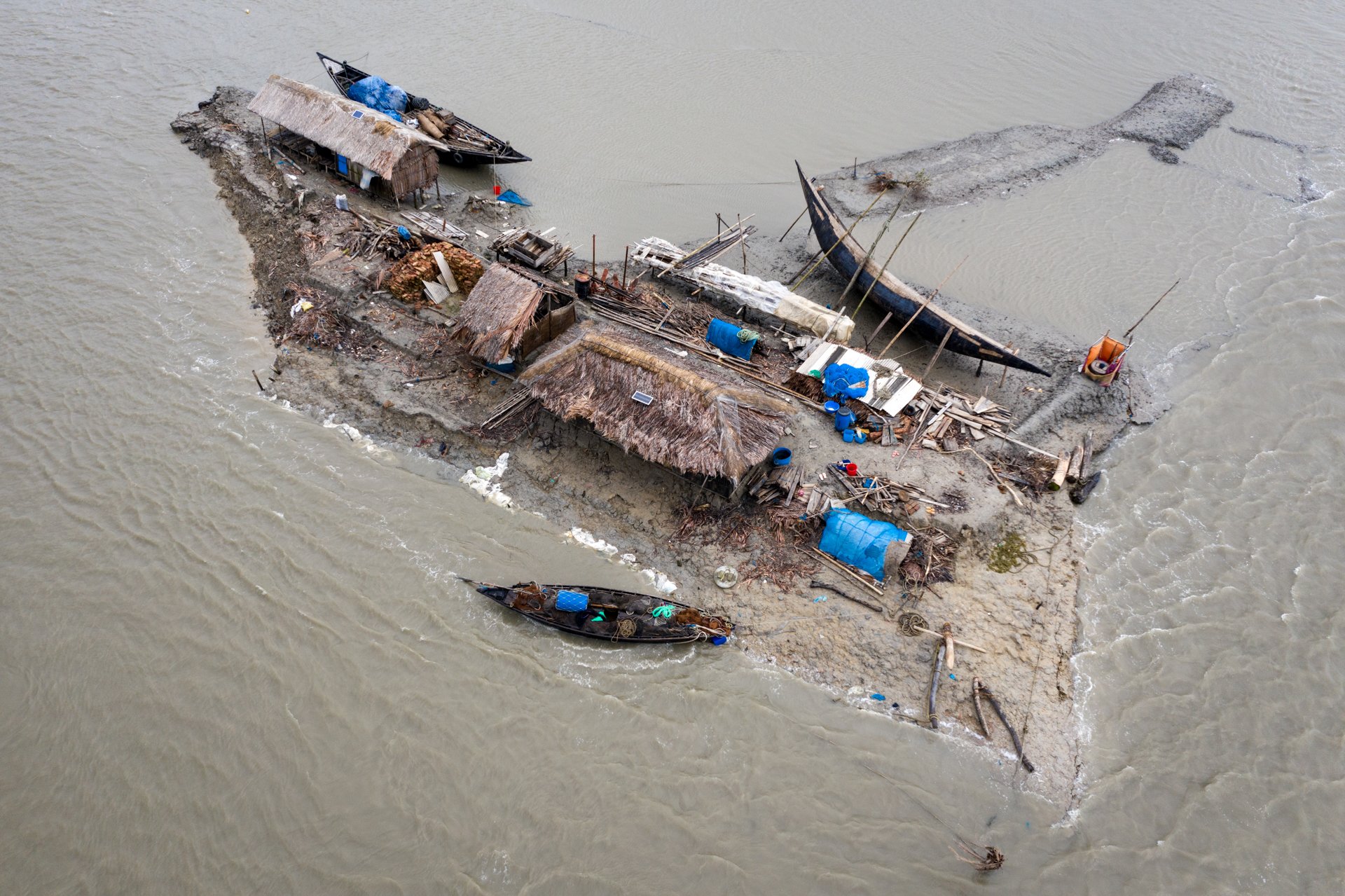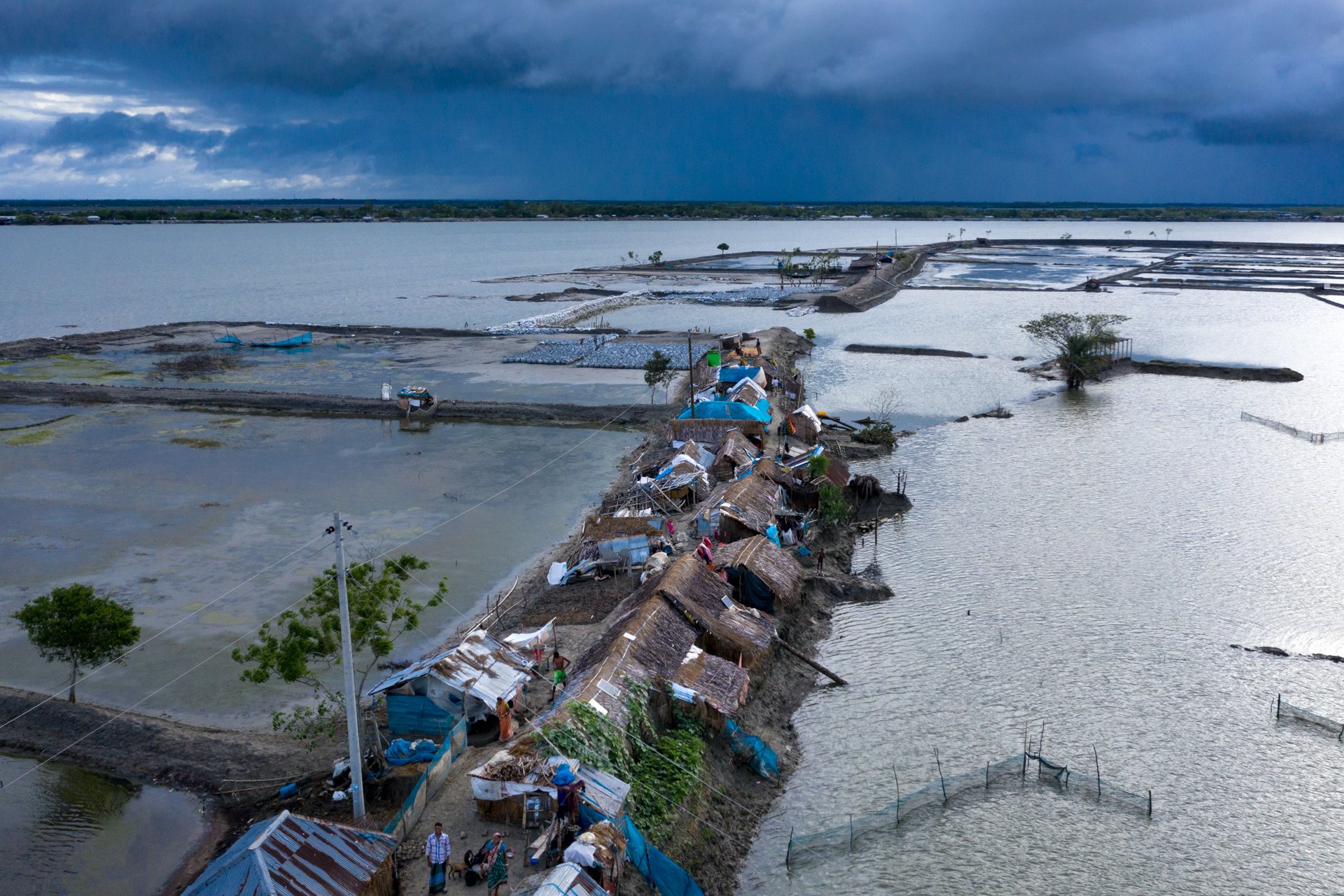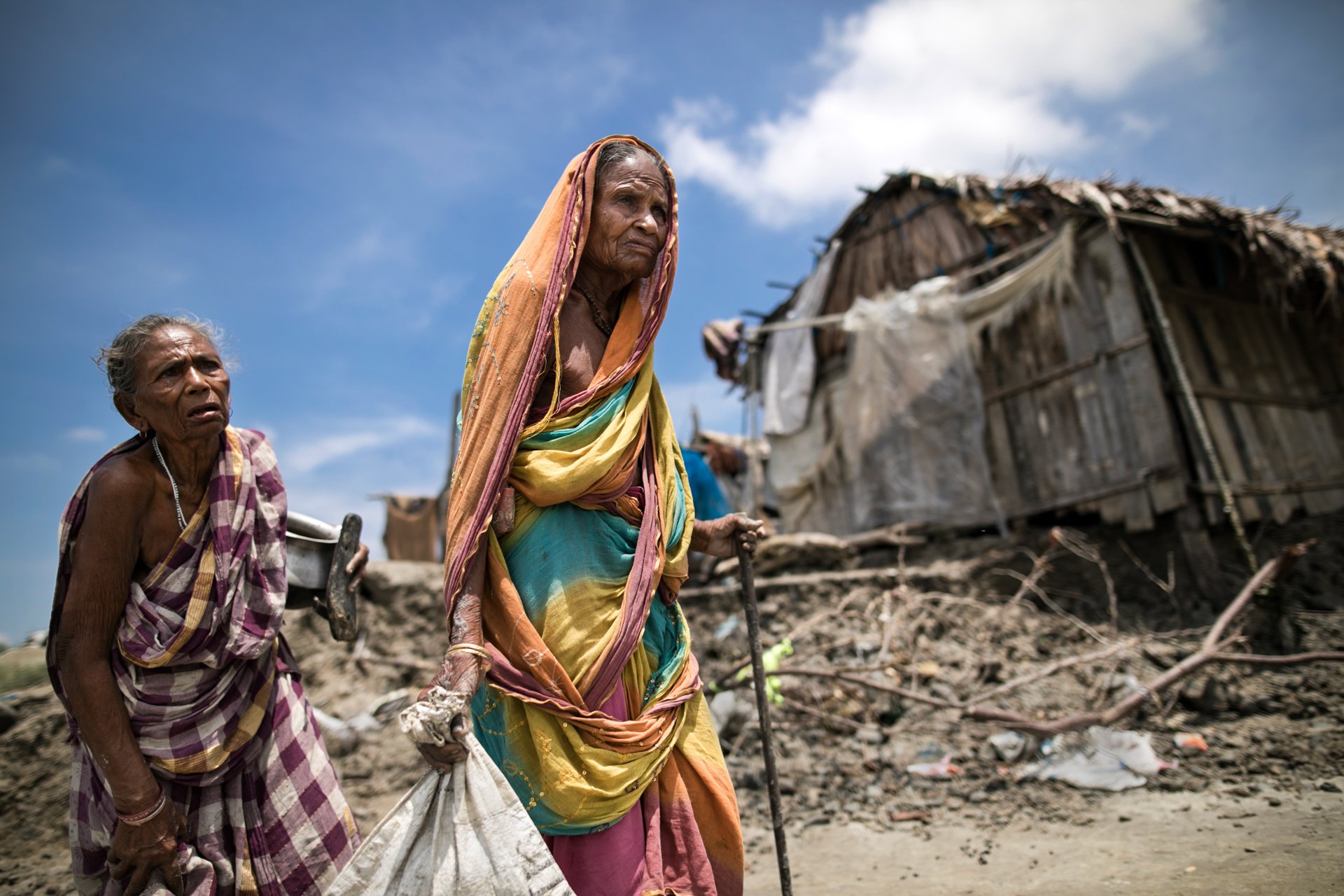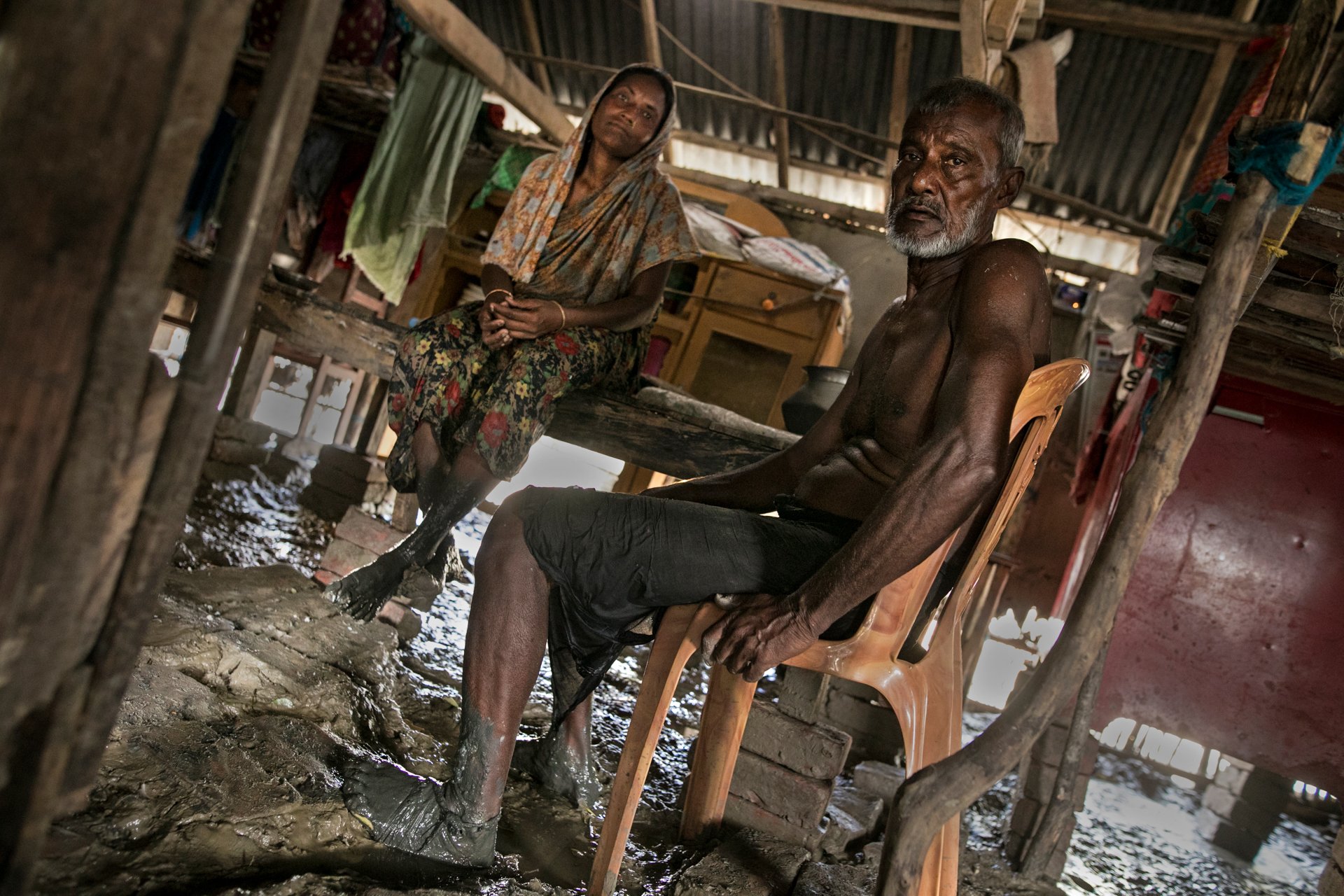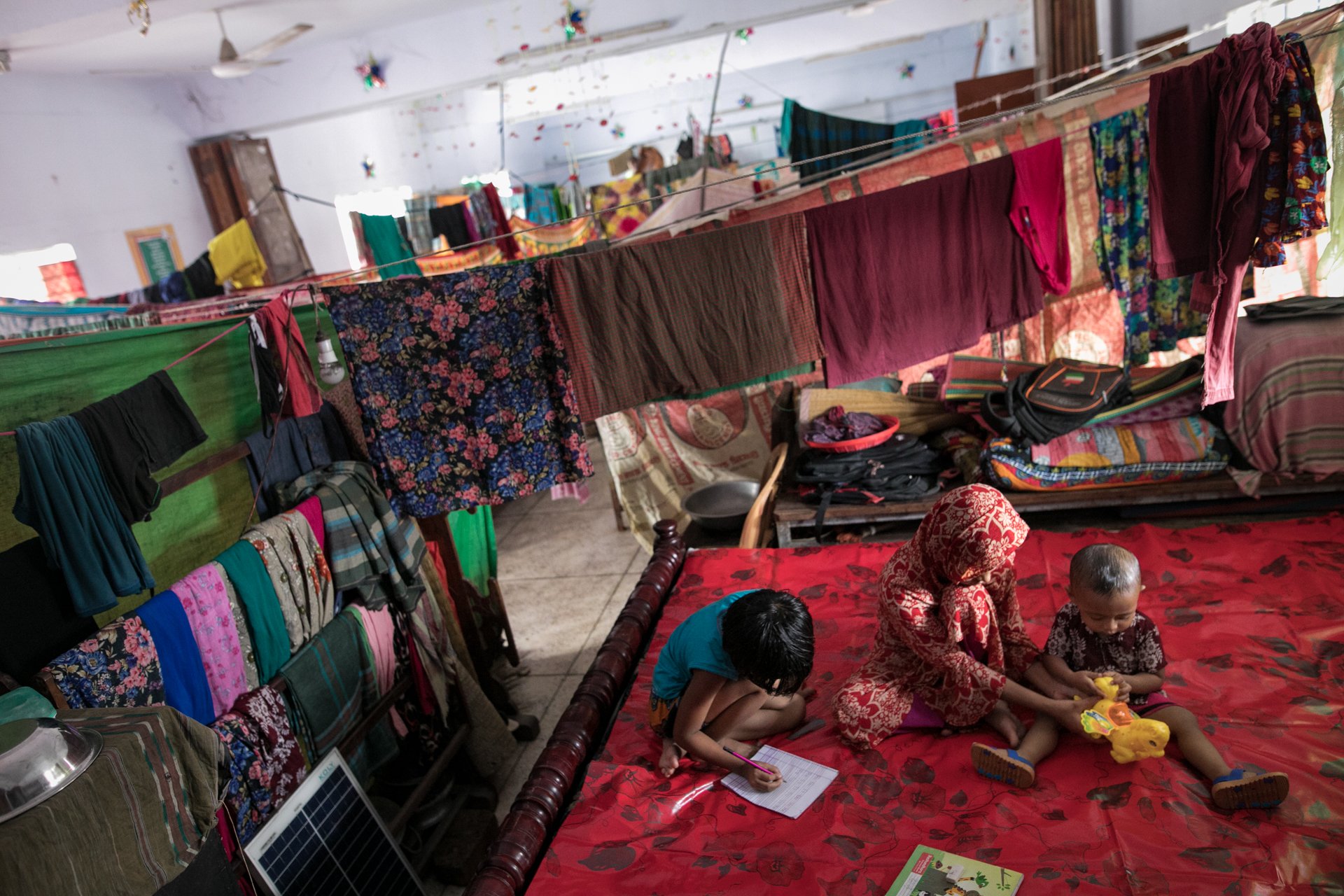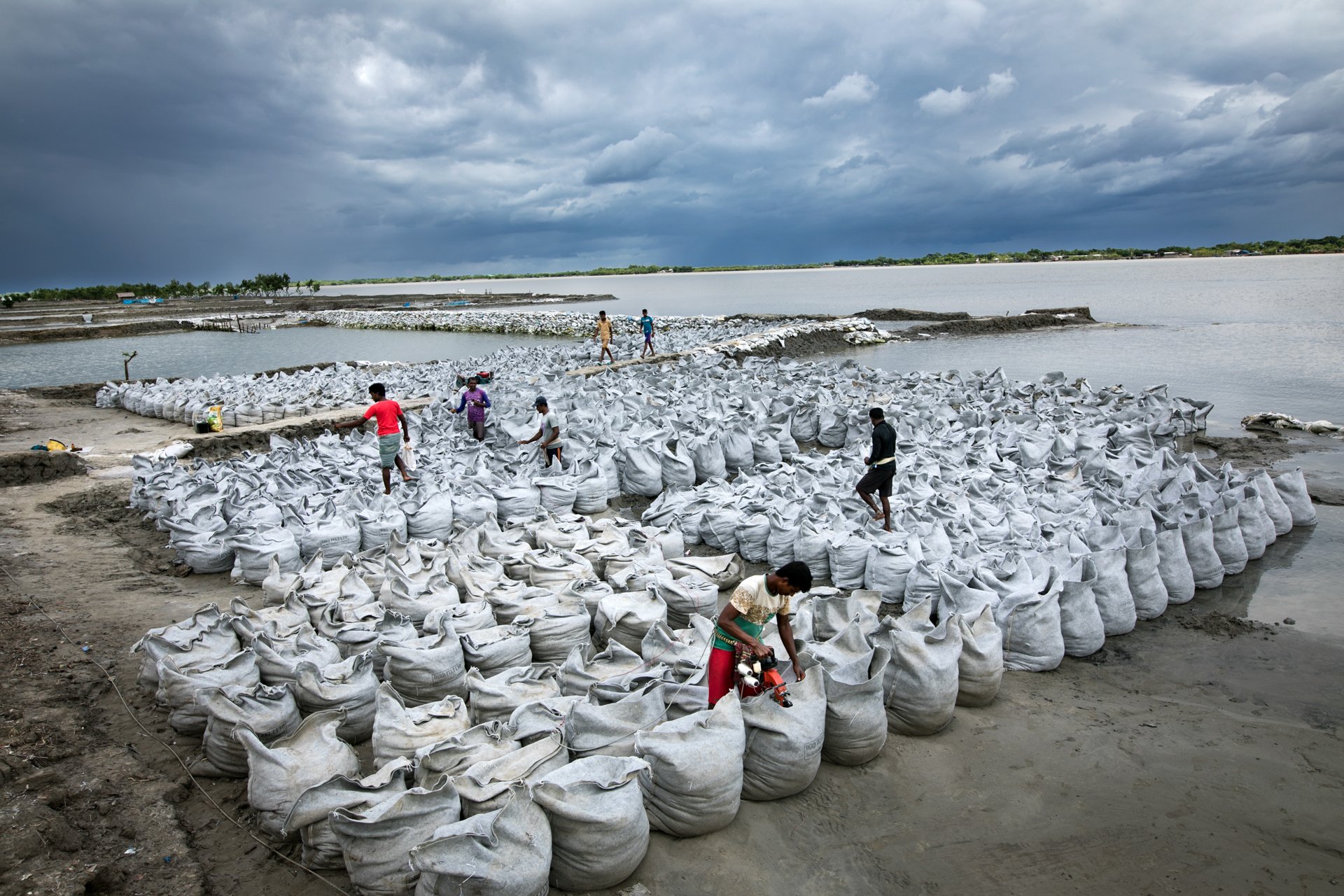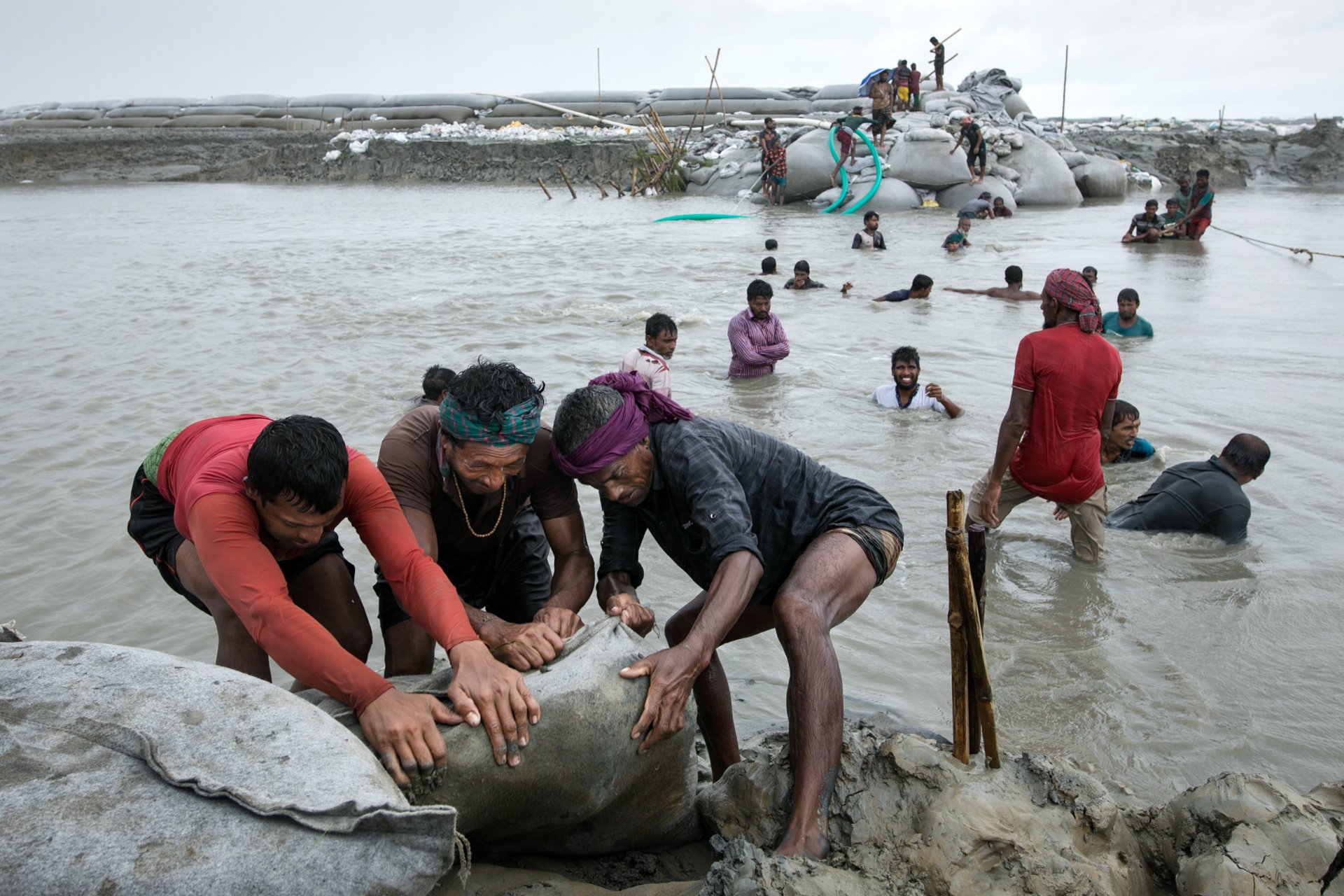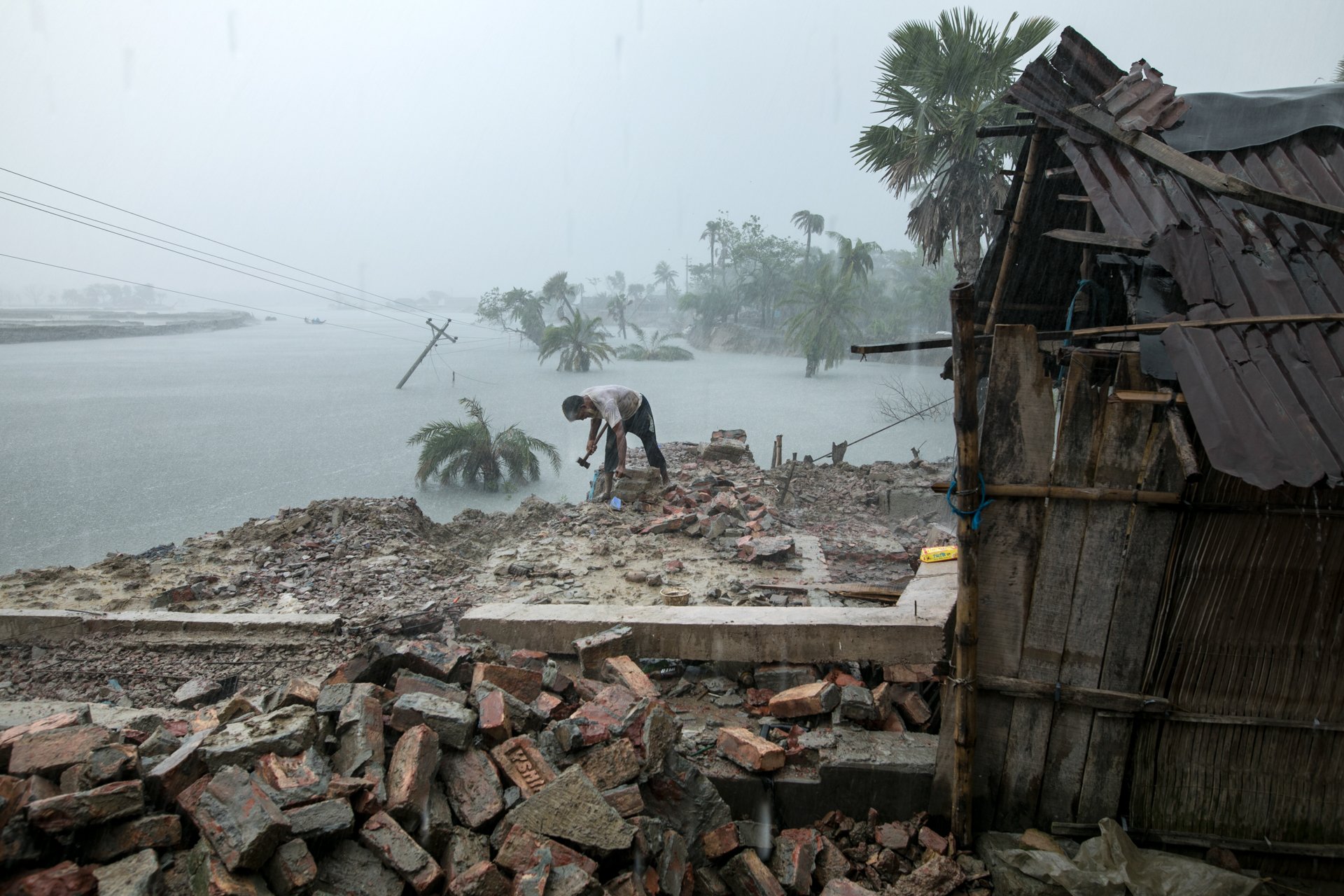The Bay of Bengal is a basin for some of the world’s deadliest tropical cyclones. Storm risks usually peak in May and November, bookending a monsoon season that routinely floods millions in South Asia.
Cyclone Amphan formed in May, careening through India’s eastern coast and striking Bangladesh. The storm caused widespread damage in India’s Odisha and West Bengal states before crashing across the border into Bangladesh.
More than 200,000 homes were destroyed or damaged in Bangladesh. Three quartersof families in the hardest-hit areas, including Khulna, reported their food stocks were wiped out or drained.
Amphan was followed by severe monsoon floods across South Asia, which inundated northern Bangladesh and swept southward. The floods set in unusually early in June, and lasted longer than two monthsin some areas. At the peak of flooding in July and August, at least a quarter of the country was submerged, including parts of Khulna district still reeling from Amphan.
This year’s disasters followed two 2019 storms, Faniand Bulbul, which carved a path through the same coastal region. In recent years, countries like Bangladesh and India have minimised disaster casualties through extensive early warning and evacuation systems– storms in 1970 and 1991 are estimated to have killed hundreds of thousands. But the damage from consecutive disasters builds, destabilising communities over the longer term.
